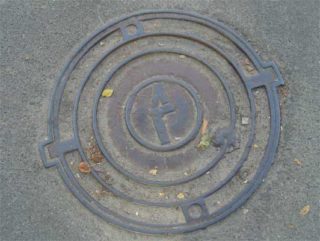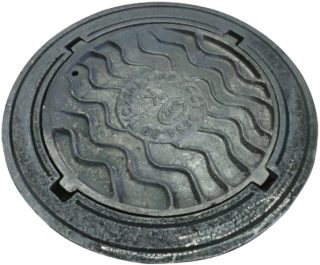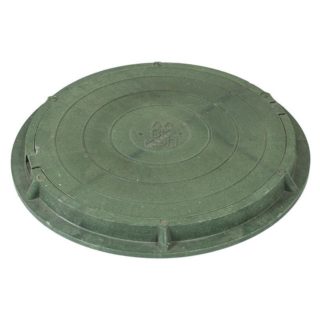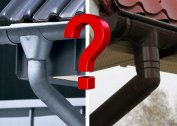The manhole manhole is designed for comfortable operation of communications located underground. Various types of sewers are equipped with similar designs - from storm sewage to household and industrial systems. They are needed to make the audit easy to use and safe for others.
Device and scope

Unlike a storm water inlet equipped with a grill, inspection hatches include a support ring and a cover. The device of the main part is different and depends on the type of communication. Cast iron and polymer-sand elements are made with lateral protrusions that are inserted into the neck grooves when installed. Plastic models are sometimes threaded and equipped with folding handles.
Hatches perform such functions:
- audit of the system node;
- preventing a person or animal from falling into the mine;
- traffic safety;
- protection of underground utilities from water and debris;
- preventing the penetration of the smell of sewage to the surface.
Thanks to the monolithic cover, foreign objects cannot enter the well shaft.
In the city, hatches are mainly mounted in yards, on highways and pedestrian areas. The selection of the model depends on what load the structure can withstand.
Characteristic features of different models
Manholes are divided by configuration and material used. Well products are usually round in the shape of wells, but square covers are permitted by standards. The latter, for example, include cast-iron hatches of the Arbat brand. And the design of the “Empire” hatch suggests a round lid, but framed by a square.
Hatches are made of cast iron alloys, polymers and composite materials.
Cast Iron Products
The most common devices made of this metal. Their main advantages are:
- high resistance to corrosion, temperature extremes and other negative external factors;
- difficulty stealing due to heaviness;
- ability to withstand high loads - up to 90 tons.
Cast iron products are equipped with locks that can only be opened with a special tool. An additional protective measure helps prevent illegal entry into well mines.
Metal products are produced only in accordance with the requirements of GOST 3634-99. They are divided into several types depending on weight and load indicators. Marking is indicated on the cover:
- "L" is a light hatch with a withstanding load of up to 1.5 tons and a weight of 65 kg. It is placed in areas of movement of pedestrians.
- "C" - the middle hatch, holds up to 12.5 tons. Used in car parks, recreation areas and squares.
- "T" - a heavy hatch with a maximum load of 25 tons, weighing up to 90 kg. It is mounted on highways with heavy traffic flow.
- "TM" - the main hatch, holds over 40 tons. The mass of the product is about 100 kg. It is applied on freight automobile parking and superhighways.
There are super-heavy hatches that are installed at airfields, industrial enterprises and ports. The cost of products depends on the design and starts from 1400 rubles.
Polymer-sand construction
They are created from a composite based on polymeric substances and sand. The polymer-sand hatch is suitable for different types of inspection wells and has many advantages:
- low weight, which allows you to mount devices without the use of special equipment;
- absolute immunity to rust and temperature surges;
- Easy to open and close thanks to a well thought out design.
Such hatches are frost-resistant. In them, unlike metal structures, with strong “minuses”, the cover and the support ring do not stick together.
The cost of such hatches is less than cast iron. The price of the product starts from 700 rubles.
Another plus is the lack of interest on the part of attackers. Theft of hatches from this material does not make sense; they cannot be handed over to metal. But, in comparison with cast iron, the composite is still a less durable material, and is not used in places with maximum load.
Plastic hatches
The lightest and cheapest, cost from 300 rubles, depending on size. Polymeric products are distinguished by a variety of shapes and colors, you can choose the right product for the architectural and design features of the household territory.
The advantages of plastic structures include:
- small mass, which simplifies the process of transportation and installation;
- anticorrosive qualities and immunity to the negative influence of external factors;
- interchangeability;
- lack of interest among the kidnappers.
Polymer structures are safe for the environment, do not emit toxic substances. They are relatively durable, able to last up to half a century, although they can not be compared in terms of wear resistance with cast iron. Products usually hold loads up to 40 tons. It is not recommended to mount them on highways or in industrial areas.
Criterias of choice
When selecting products, they are guided by the withstand load and location, as well as the dimensions of cast-iron and composite hatches for inspection wells. The size range of plastic products is very diverse.
| Title | Class | Load in tons | Cross section and height in mm | Place of installation |
| Lightweight small | A15 | 1,5 | 540x80; 750x80; 730x60 | Gardens, park areas, sidewalks |
| Easy | A15 | 5 | 750x90 | Parks, pedestrian areas |
| Middle | B125 | 12,5 | 750x100 | Streets with moderate traffic |
| Heavy | C250 | 25 | 800x110 | Heavy-duty roads, car parks |
| Heavy trunk | D400 | 40 | 810x120 | Motorways, truck parking |
| Super Heavy 1 | E600 | 60 | 810x150 | Territories of industrial complexes, transport terminals |
| Super Heavy 2 | F900 | 90 | 785x160 | Airfields, seaports |
If hatches are selected for municipal and industrial needs, they must clearly comply with state standards in all respects. When choosing designs for the adjoining area, you can order a product of any size and shape, but still for long-term operation, its indicators should not differ much from the standard ones.
Mounting Features
To install cast-iron structures, you need to hire special equipment. Models made of composite and plastic materials can be mounted with your own hands. When arranging, it is necessary to ensure that the hatch does not rise above the level of coverage, especially on the highway and the pedestrian zone. Installation is carried out flush with soil or asphalt.
Installation is carried out in four stages:
- Mount the support ring on a reinforced concrete floor.
- Pour with concrete mixture for fixing.
- Install the manhole cover in the ring after setting concrete mortar.
- Drill holes in the body for fixing with anchors, followed by fixing.
After installation is complete, blind areas 1–1.5 m wide must be made in order to drain excess water.
For a longer service life, hatches must be periodically checked and cleaned of contaminants.
Modern models of well hatches provide reliable protection to the networks located underground and are organically integrated into any landscape.





